oat molasses bread recipe maine: isn’t just a recipe; it’s a celebration of rich flavors, hearty ingredients, and Maine’s heritage of wholesome baking. Whether you’re an experienced baker or someone just looking to explore healthy bread options, this recipe showcases the perfect balance of nutrition and tradition. Let’s walk through everything you need to create this delightful loaf.
Oat Molasses Bread Recipe: About the Recipe
Oat Molasses Bread is a heartwarming combination of rolled oats, molasses, and a blend of simple ingredients that bring out the rustic taste of Maine. This bread is not just delicious but also rich in nutrients, making it a great choice for breakfast, snacks, or even gifting to friends and family.
Dating back to the traditional bread recipes of the Northeast, this recipe has been a staple in homes for generations. Its earthy sweetness, provided by molasses, and the dense texture from oats make it a crowd favorite.
Why You’ll Love This Oat Molasses Bread Recipe
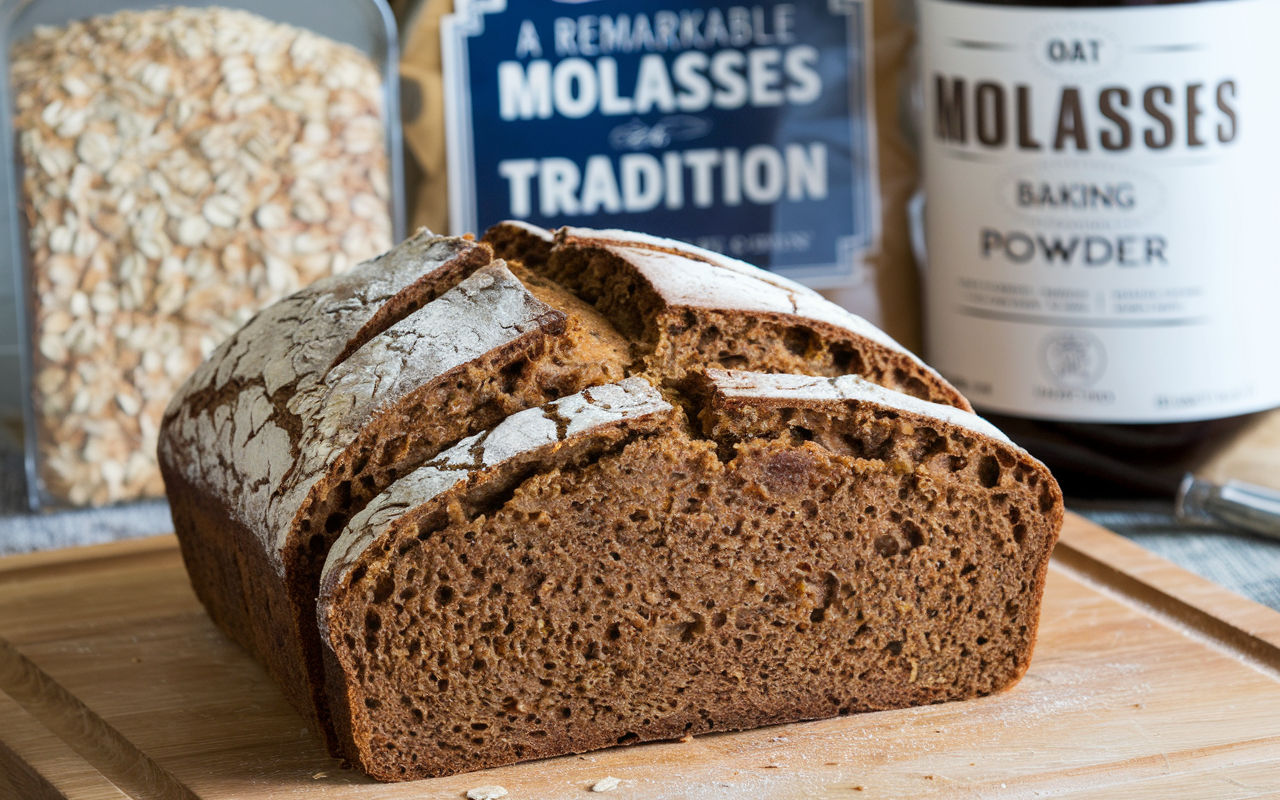
- Nourishing and Wholesome: Packed with fiber from oats and iron from molasses, this bread isn’t just delicious—it’s a nutrient-rich choice that supports digestion and keeps you feeling full longer. Perfect for anyone looking for a healthier alternative to store-bought bread.
- Easy to Make: With simple, pantry-friendly ingredients, this recipe is beginner-friendly and doesn’t require any fancy equipment or complicated steps. Even if you’ve never baked bread before, you can confidently whip this up on your first try.
- Customizable: This bread is a blank canvas for creativity. Mix in nuts, seeds, dried fruits, or even a dusting of cocoa powder for chocolate lovers to elevate the flavors and make it truly your own. You can even experiment with spices like cinnamon or nutmeg for a seasonal twist.
- Perfect for Any Occasion: Whether you’re enjoying it toasted with jam for breakfast, pairing it with soup for lunch, or serving it as part of a holiday feast, Oat Molasses Bread is as versatile as it is delicious. It’s also a thoughtful homemade gift for friends and family.
Oat Molasses Bread Recipe: Key Ingredients and Substitutions
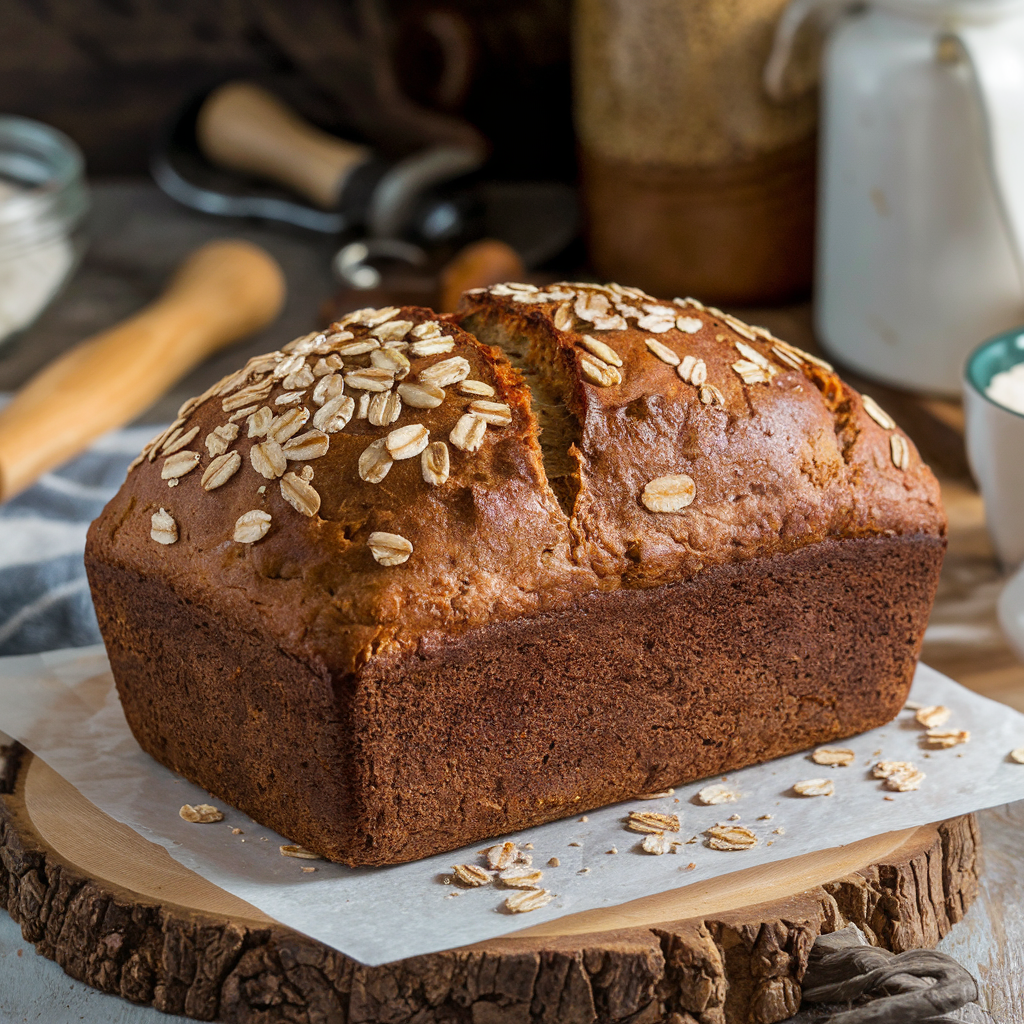
Here’s a detailed breakdown of the key components for this recipe and how you can adjust them to suit your dietary preferences or taste.
Essential Ingredients:
- Rolled Oats – The star of the recipe, rolled oats form the base and give the bread a hearty, rustic texture. Be sure to use gluten-free oats if you’re catering to dietary restrictions. For an extra nutty flavor, lightly toast the oats before mixing them in.
- Molasses – This natural sweetener adds a rich, caramel-like depth of flavor, along with an extra boost of minerals like iron and calcium. Dark molasses is ideal for a bold flavor, but if you prefer something milder, light molasses works just as well. You can even experiment with a mix of molasses and honey for a balanced sweetness.
- Whole Wheat Flour – The whole wheat flour provides a rustic feel and boosts the fiber content. If you’re looking for a lighter texture, substitute with all-purpose flour, or for a gluten-free version, try a gluten-free flour blend.
- Yeast – Essential for giving the bread its rise and soft crumb. Make sure your yeast is fresh and active to achieve the best results. Quick-rise yeast can also be used to save time.
- Warm Water – The right temperature (about 110°F) is key to activating the yeast properly, ensuring your bread rises beautifully. If you’d like, you can substitute part of the water with warm milk for a softer texture.
Optional Add-ins:
- Seeds – Chia, sunflower, or flax seeds are excellent choices to boost the bread’s nutrition and add a satisfying crunch. Sprinkle some on top for extra visual appeal.
- Nuts – Walnuts, pecans, or almonds add a lovely bite and complement the hearty flavors of the bread. Chop them coarsely for texture or grind them finer to mix seamlessly into the dough.
- For Chocolate Lovers – To make this bread a treat, stir in a bit of cocoa powder or dark chocolate chips. This adds a delightful twist and makes it a perfect dessert bread or afternoon snack.
- Dried Fruits – Raisins, dried cranberries, or chopped dates can lend an extra layer of sweetness and chewiness, making the bread even more irresistible.
- Spices – A dash of cinnamon, nutmeg, or even ground ginger can transform the bread into a warm, aromatic loaf perfect for the fall and holiday seasons.
Whether you’re keeping it simple or creating a customized masterpiece, this Oat Molasses Bread is guaranteed to become a staple in your kitchen. So, roll up your sleeves and get baking—you’re going to love the results!
How to Make Oat Molasses Bread Recipe (Step-by-Step)
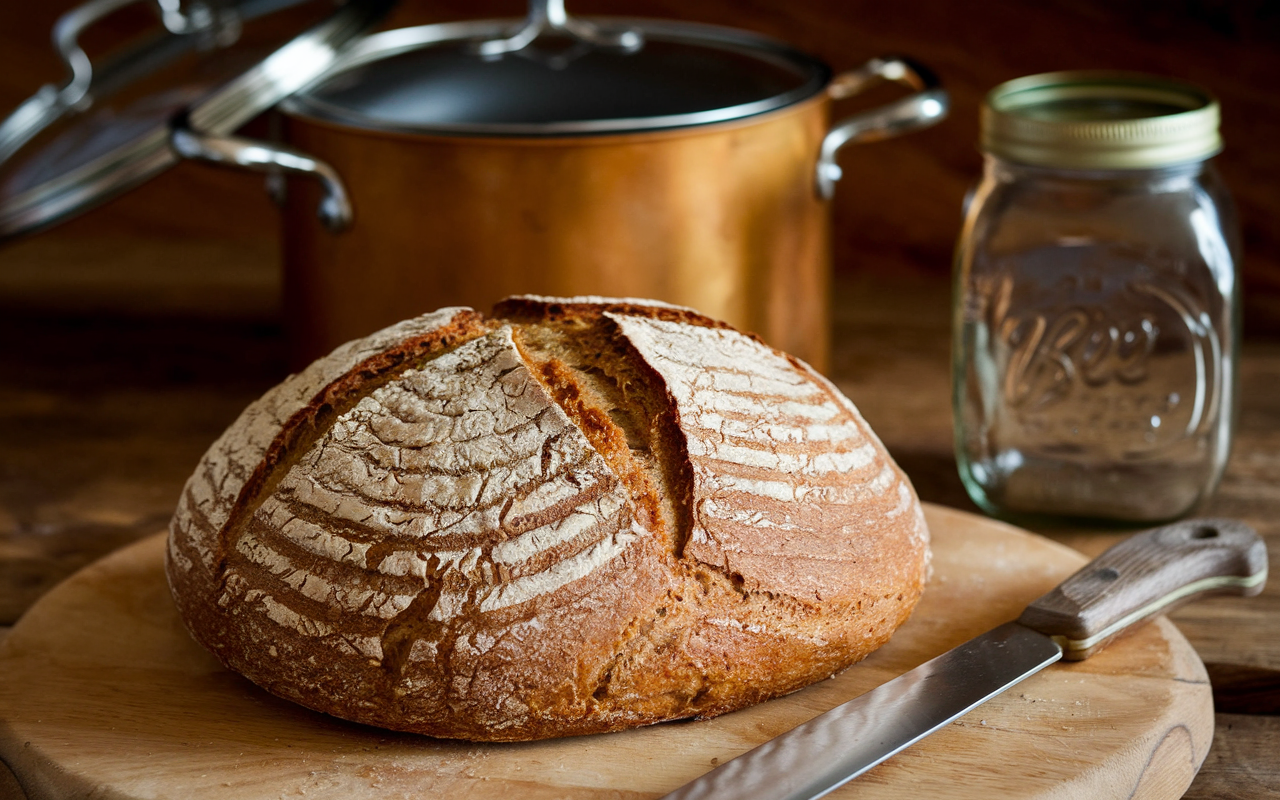
Step 1: Activate the Yeast
- Start by dissolving 2 teaspoons of active dry yeast in ½ cup of warm water (about 100-110°F). It’s important that the water is warm, not hot, as high temperatures can kill the yeast.
- Add 1 teaspoon of sugar to feed the yeast and help it activate. Stir gently, then let the mixture sit for 5-10 minutes. You’ll know the yeast is activated when a frothy layer forms on top. If it doesn’t, your yeast may be expired, and you’ll need to start over with fresh yeast.
Step 2: Prepare the Oat Mixture
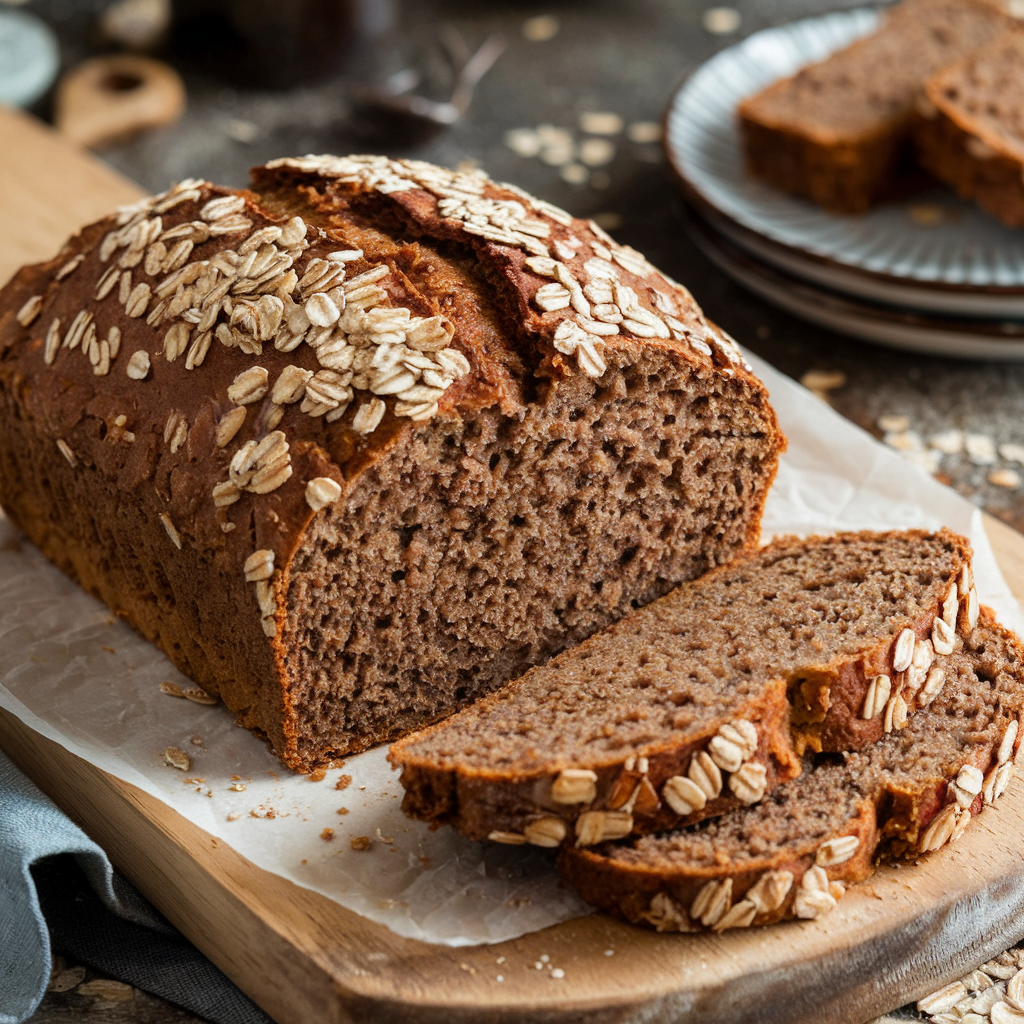
- While the yeast is activating, combine 1 cup of rolled oats with 1 ½ cups of boiling water in a mixing bowl. Stir well to ensure the oats are evenly coated and start to soften. Let the mixture cool slightly, as adding hot ingredients to the yeast mixture could kill the yeast.
- Once the mixture has cooled to warm (not hot), add ⅓ cup of molasses for a rich, slightly sweet flavor, and 2 tablespoons of softened butter or oil for moisture and texture. Stir until everything is well combined.
Step 3: Mix the Wet and Dry Ingredients
- Gradually pour the activated yeast mixture into the oat mixture, stirring as you go to combine. Take care to mix thoroughly so the yeast is evenly distributed.
- Slowly add in 3 cups of whole wheat flour, one cup at a time, along with 1 teaspoon of salt. Stir with a sturdy spoon or spatula until a sticky dough begins to form. If the dough is too wet, you can add a little more flour, one tablespoon at a time, but be careful not to overdo it—you still want the dough to be slightly sticky.
Step 4: Knead the Dough
- Transfer the dough to a lightly floured surface and begin kneading. Kneading is essential to develop the gluten in the flour, which gives the bread its structure. Use the heel of your hand to push the dough away from you, then fold it back over and rotate it slightly. Repeat this motion for about 10 minutes until the dough becomes smooth, elastic, and less sticky.
- Alternatively, if you have a stand mixer with a dough hook attachment, you can knead the dough on medium speed for 5-7 minutes. The dough should pull away from the sides of the bowl when it’s ready.
Step 5: First Rise
- Lightly oil a large bowl and place the kneaded dough inside, turning it once to coat the surface with oil. This prevents the dough from drying out as it rises.
- Cover the bowl with a clean kitchen towel or plastic wrap and place it in a warm, draft-free spot. Let the dough rise for 1-2 hours, or until it doubles in size. Patience is key here, as the slower rise allows the flavors to develop.
Step 6: Shape and Second Rise
- Once the dough has risen, gently punch it down to release any trapped air bubbles. This step ensures an even texture in your bread.
- Shape the dough into a loaf by flattening it slightly and folding it into a rectangular shape. Tuck the ends under to create a smooth surface.
- Place the shaped loaf into a greased bread pan, seam side down, and cover it loosely with a towel. Let it rise again for 30-45 minutes, or until it puffs up and fills the pan. The second rise is quicker than the first, so keep an eye on it.
Step 7: Bake
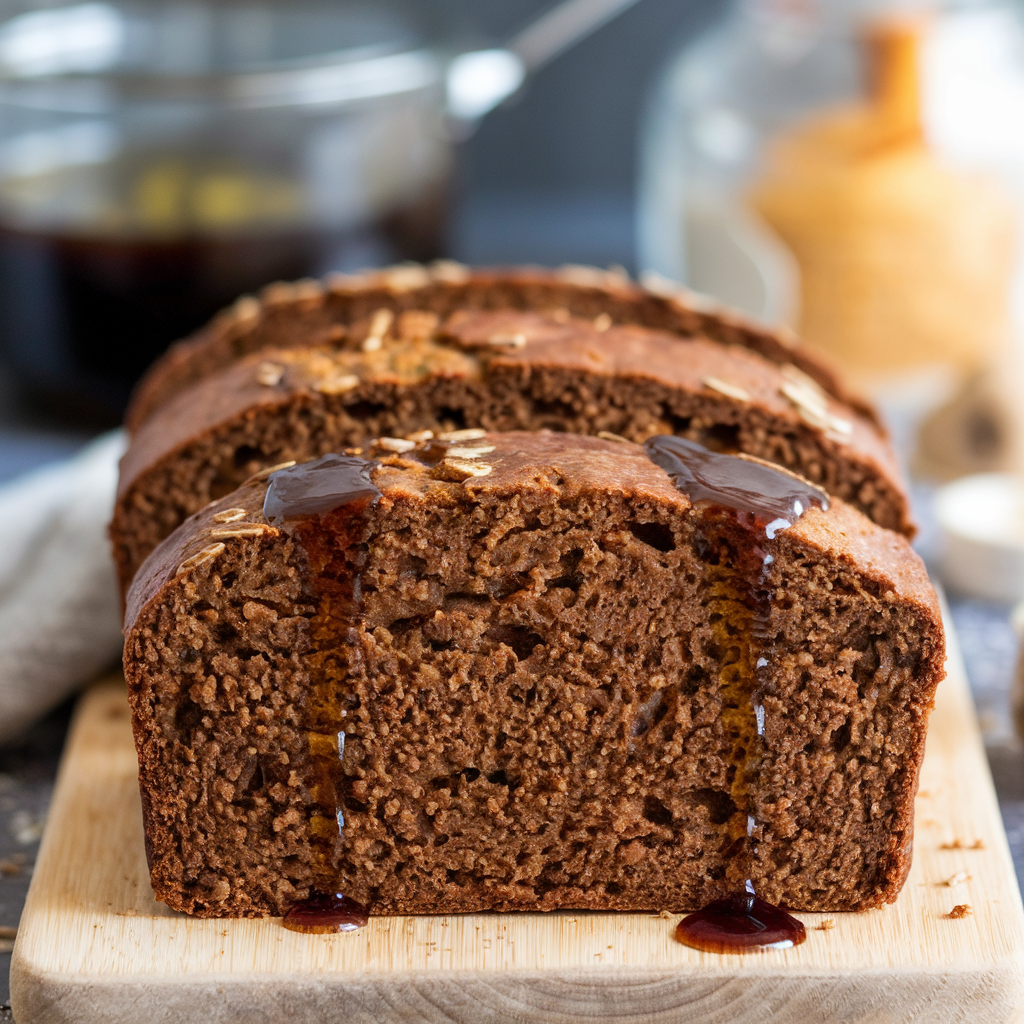
- Preheat your oven to 375°F (190°C) while the dough completes its second rise. A hot oven ensures the bread gets an initial burst of heat, helping it rise further in the oven (known as “oven spring”).
- Place the bread in the preheated oven and bake for 35-40 minutes, or until the top is golden brown and the loaf sounds hollow when tapped on the bottom. If you have a kitchen thermometer, the internal temperature of the bread should read 190-200°F when fully baked.
Step 8: Cool and Enjoy
- Once baked, carefully remove the bread from the pan and place it on a wire rack to cool. This allows air to circulate around the bread, preventing a soggy bottom.
- Let the bread cool completely before slicing to ensure it holds its shape. Then, slice and enjoy your homemade oat molasses bread with butter, jam, or your favorite toppings!
Oat Molasses Bread Recipe: Expert Tips for Success
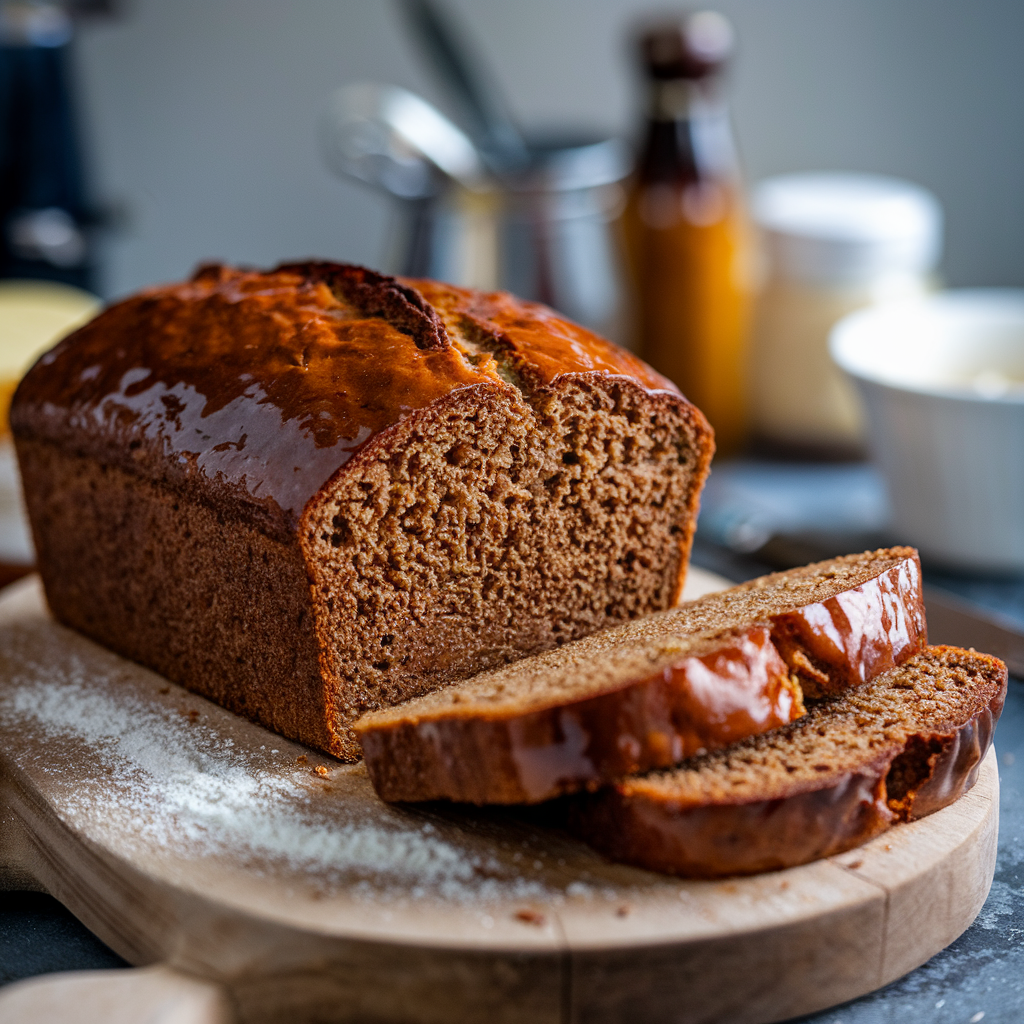
- Measure Precisely: Baking is a science, and precise measurements can make the difference between success and failure. Use a kitchen scale for dry ingredients and measuring cups for liquids to ensure accuracy every time.
- Don’t Overheat the Water: The temperature of your water is crucial when working with yeast. Water that’s too hot can kill the yeast, stopping your dough from rising. Aim for water that feels warm but not hot to the touch—about 100°F to 110°F is ideal.
- Adjust Rising Time: Rising time can vary depending on the temperature of your kitchen. If it’s too chilly, the dough may take much longer to rise. To speed things up, place the dough in a warm, draft-free spot, like an oven that’s turned off but slightly warmed beforehand. Cover it with a damp cloth to retain moisture.
- Use Fresh Yeast: Yeast is a living organism, and using fresh yeast is essential for a good rise. Always check the expiration date and store it properly in the refrigerator. If you’re unsure whether it’s still active, proof it in warm water with a pinch of sugar before adding it to your recipe.
Oat Molasses Bread Recipe: Variations and Customizations
- Savory Option: For a hearty, savory twist, omit the molasses and add fresh or dried rosemary, minced garlic, or even sharp cheddar cheese. This variation pairs perfectly with soups, stews, or as a base for a sandwich. Feel free to experiment with other herbs like thyme or oregano for an added layer of flavor.
- Add a Sweet Touch: For those who love a bit of natural sweetness, mix in dried cranberries, raisins, or chopped dates. These ingredients add bursts of flavor and texture, making it ideal for breakfast or a mid-day snack. You could even sprinkle some cinnamon for a warm, spiced note.
- Gluten-Free: Make this recipe accessible to everyone by swapping in a 1-to-1 gluten-free baking flour and gluten-free oats. This ensures the same rich flavor and texture while catering to dietary needs. If you’re experimenting with other gluten-free flours like almond or coconut, adjust the liquid ratio for best results.
Oat Molasses Bread Recipe: Nutritional Information
Curious about the health benefits of this bread? Here’s a breakdown:
- Calories (per slice): ~160
- Fiber: 3 grams, supporting digestion and keeping you full longer.
- Protein: 5 grams, contributing to muscle repair and overall energy.
- Main Benefits: This bread is an excellent source of iron, which is vital for oxygen transport in the body, as well as fiber and complex carbohydrates, providing long-lasting energy without the sugar crash.
For more precise calculations, consider entering your specific ingredients into a nutrition calculator, especially if you’re using custom add-ins like dried fruits or cheese.
Oat Molasses Bread Recipe: Storage and Reheating Instructions
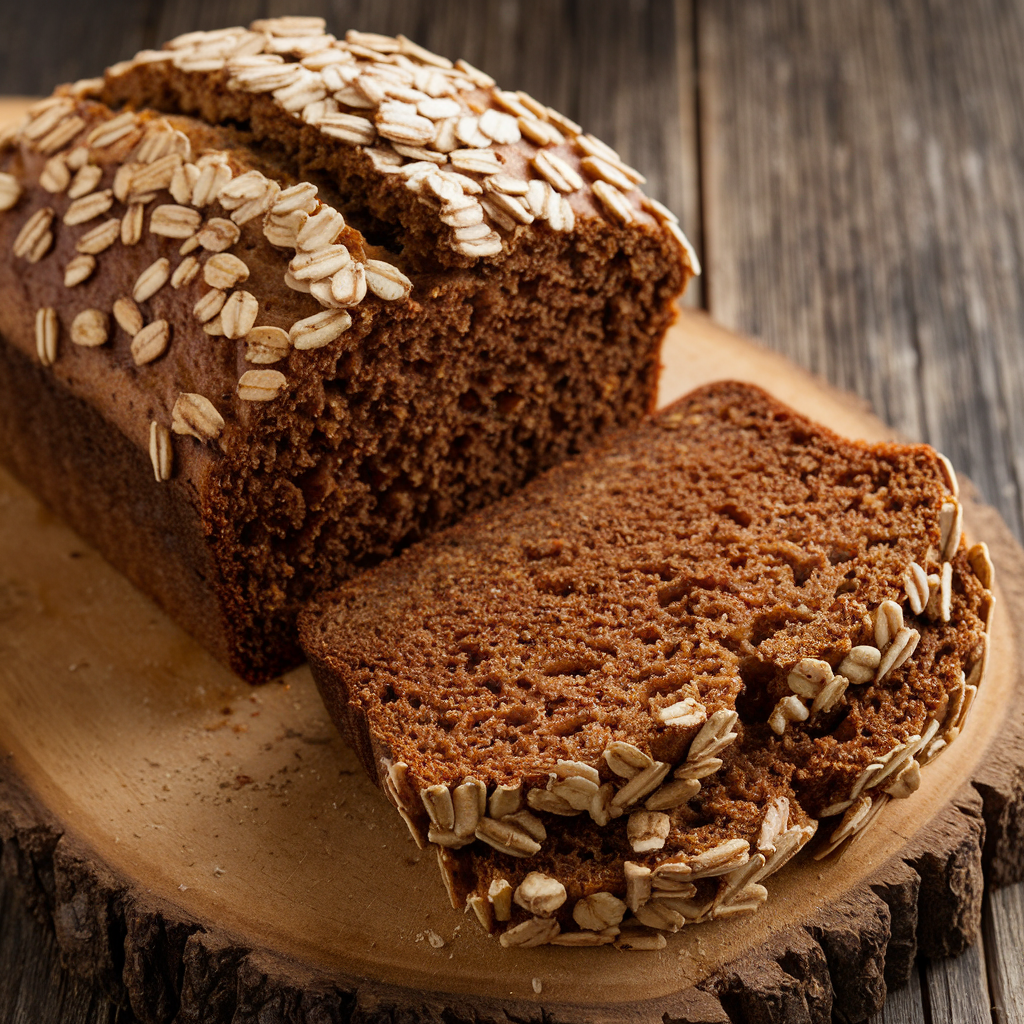
- Storage: To keep your bread fresh, store it in an airtight container or wrap it tightly in foil. It will last at room temperature for up to three days. If you live in a warmer climate, consider storing it in the refrigerator to extend its freshness by a couple of extra days.
- Freezing: Need to save some for later? Slice the loaf and freeze individual slices in a sealed freezer bag or container. It will stay good for up to two months. For best results, separate slices with parchment paper to prevent sticking.
- Reheating: To enjoy warm, fresh-tasting bread, reheat slices in the oven at 300°F for 5-7 minutes or pop them straight into the toaster. For whole loaves, wrap in foil and warm in the oven for about 10-15 minutes.
Every bite of this Oat Molasses Bread tells a story—one of tradition, comfort, and nourishment. It’s more than just bread; it’s a connection to the rich flavors of Maine and the joy of homemade baking. Whether you enjoy it with a pat of butter, a drizzle of honey, or on its own, this bread is a little slice of happiness.
Love this recipe? Snap a picture of your loaf and share it with us on social media! Don’t forget to tag us so we can see your creations. Looking for even more baking inspiration? Sign up for our newsletter for exclusive recipes, tips, and ideas, or explore our collection of Maine-inspired recipes.
Oat Molasses Bread Recipe Maine
Post Disclaimer
👩🍳 100% Real Recipes, Chef-Approved! 🔥
All the recipes you’ll find here at Choco Fever Dream are completely real, thoroughly tested, and approved by professional chefs to ensure accuracy, flavor, and reliability. While we may use AI-generated images to enhance your browsing experience, the food itself is always the real deal.
We do our best to keep everything up-to-date and trustworthy, but we can’t promise perfection—so please use your own judgment when cooking. Most importantly, have fun and enjoy the process!
Happy cooking! 🍽️💛

4 thoughts on “Oat Molasses Bread Recipe Maine: A Remarkable Taste of Tradition”